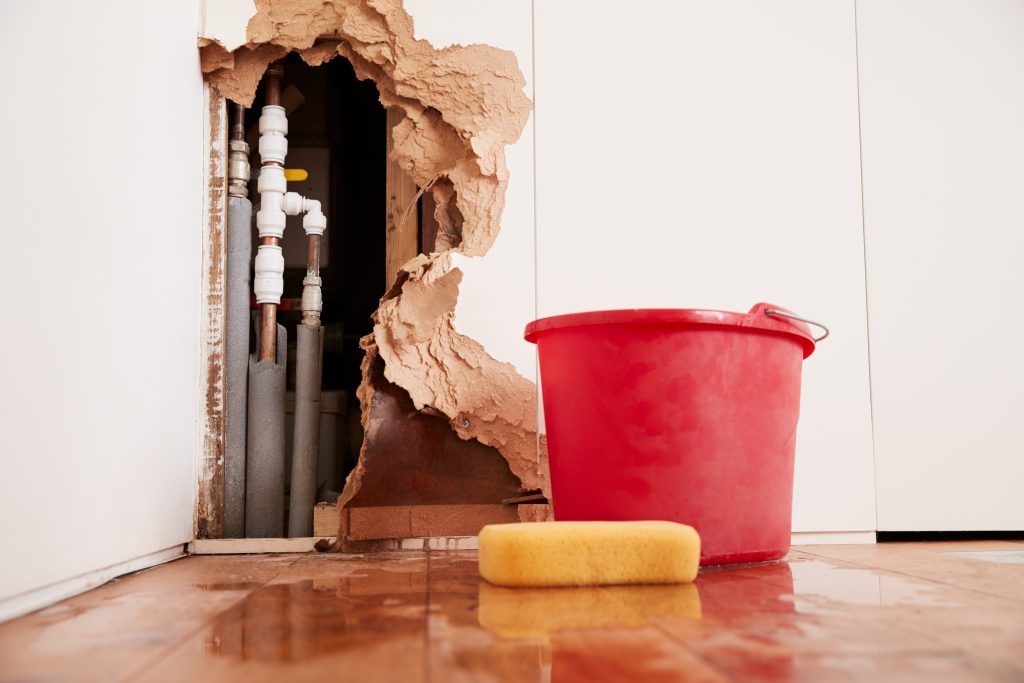Just how do you actually feel when it comes to Locating water leaks?

Early detection of dripping water lines can reduce a possible calamity. Some small water leakages may not be visible.
1. Check Out the Water Meter
Every house has a water meter. Checking it is a surefire way that assists you uncover leakages. For beginners, turn off all the water sources. Make sure no person will flush, make use of the faucet, shower, run the washing device or dishwasher. From there, most likely to the meter as well as watch if it will certainly transform. Because no one is using it, there need to be no activities. That shows a fast-moving leakage if it relocates. Also, if you discover no changes, wait an hour or two and inspect back once again. This implies you may have a slow-moving leakage that could also be underground.
2. Inspect Water Intake
Analyze your water costs and also track your water intake. As the one paying it, you need to see if there are any type of discrepancies. If you spot sudden changes, in spite of your intake coinciding, it means that you have leakages in your plumbing system. Remember, your water expense should drop under the same variety on a monthly basis. An unexpected spike in your costs indicates a fast-moving leakage.
A consistent rise every month, even with the exact same routines, reveals you have a slow leak that's additionally gradually rising. Call a plumber to thoroughly check your property, especially if you feel a warm area on your floor with piping beneath.
3. Do a Food Coloring Test
30% comes from bathrooms when it comes to water consumption. Test to see if they are running properly. Drop flecks of food shade in the storage tank and wait 10 minutes. There's a leak between the container as well as bowl if the shade somehow infiltrates your dish during that time without flushing.
4. Asses Outside Lines
Don't forget to examine your outside water lines also. Examination faucets by affixing a yard hose pipe. Should water permeate out of the connection, you have a loosened rubber gasket. Change this as well as ensure all connections are limited. It will help get it skillfully checked out and preserved every year if you have actually obtained a lawn sprinkler system. One small leakage can lose lots of water as well as surge your water bill.
5. Check as well as Analyze the Scenario
Property owners should make it a behavior to inspect under the sink counters and also even inside closets for any type of bad odor or mold and mildew growth. These 2 red flags show a leak so punctual attention is needed. Doing regular assessments, also bi-annually, can save you from a significant trouble.
Examine for discolorations and compromising as a lot of appliances and pipes have a life expectancy. If you think leaking water lines in your plumbing system, do not wait for it to intensify.
Early detection of leaking water lines can minimize a possible calamity. Some little water leakages might not be visible. Inspecting it is a guaranteed way that assists you find leakages. One tiny leak can lose loads of water and also increase your water bill.
If you believe leaking water lines in your plumbing system, do not wait for it to escalate.
How to Know If Your Home Has a Hidden Leak
Water Meter Reveals Inexplicable Water Usage
If you’d like to test whether or not there’s a leak somewhere in your home, you can do this using your water meter. Here is how to conduct the test:
Don’t use any water in your home for at least 30 minutes; this also means not turning on faucets or water-using appliances.
Go outside, and check your water meter for activity.
If your water meter shows that there was activity, even though no one was using any water, this proves that there is a leak in your home.
Visible Mold or Mildew Growth
Leaks behind walls create moist, dark environments that allow mold and mildew to grow and thrive. Eventually, you might see mold growth forming on the wall closest to a hidden leak.
If mold is growing in an area that receives a high amount of moisture, such as a bathroom, it may simply be an indication that better ventilation is needed. However, if you see mold growth on a wall or the ceiling in an area where you would not expect, you probably have a hidden leak.
Musty, Mildew Odor
Sometimes you might not be able to see the mold or mildew that is growing as a result of a leak. However, the smell can give the problem away just as easily. If you catch a whiff of something musty, there’s a good chance that old water is collecting somewhere in your home that you can’t see.
Stained/Warped Walls, Ceilings, or Floors
When your home soaks up water, a variety of red flags can become visible, including ceiling stains, bubbling drywall, warped walls, and sagging floors. While these issues can be caused by excess humidity, they can also be signs that a pipe or plumbing connection has started leaking behind your walls.
Inexplicably High Water Bill
After a while, you get a general sense for what your water bill should be. If you own a pool or sprinkler system, your bill will tend to be higher during summer. However, if you receive a water bill that seems especially high, and you can’t figure out what caused it, then you may have a hidden leak somewhere that’s increasing your bill.
https://www.plumbingjoint.com/blog/2019/july/how-to-know-if-your-home-has-a-hidden-leak/

As a devoted person who reads about Locating water leaks, I imagined sharing that blog post was a great idea. In case you liked our post kindly be sure to share it. Many thanks for taking the time to read it.
Comments on “Guide To Water Leakage Discovery In Your Home”